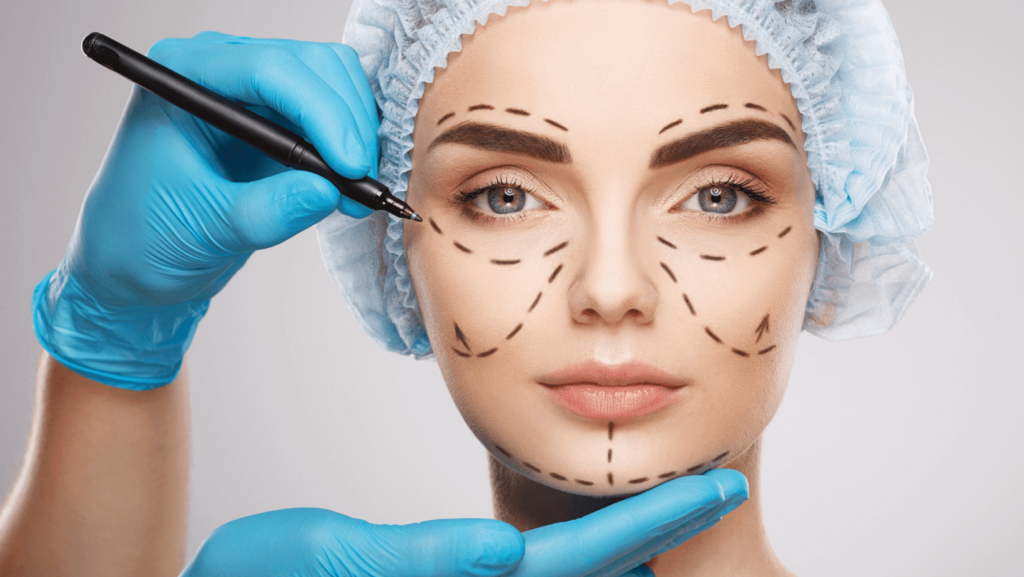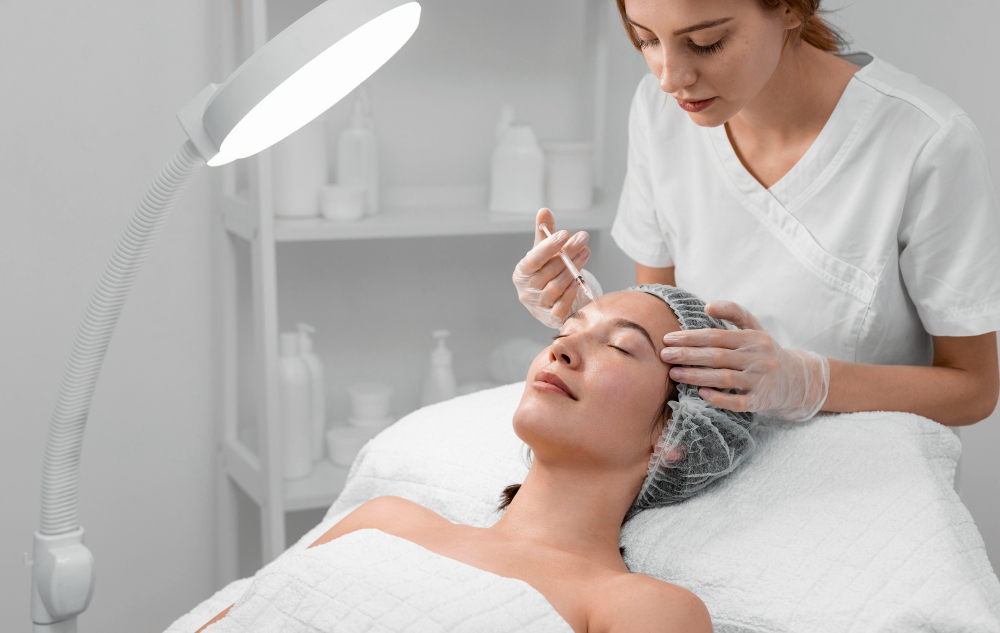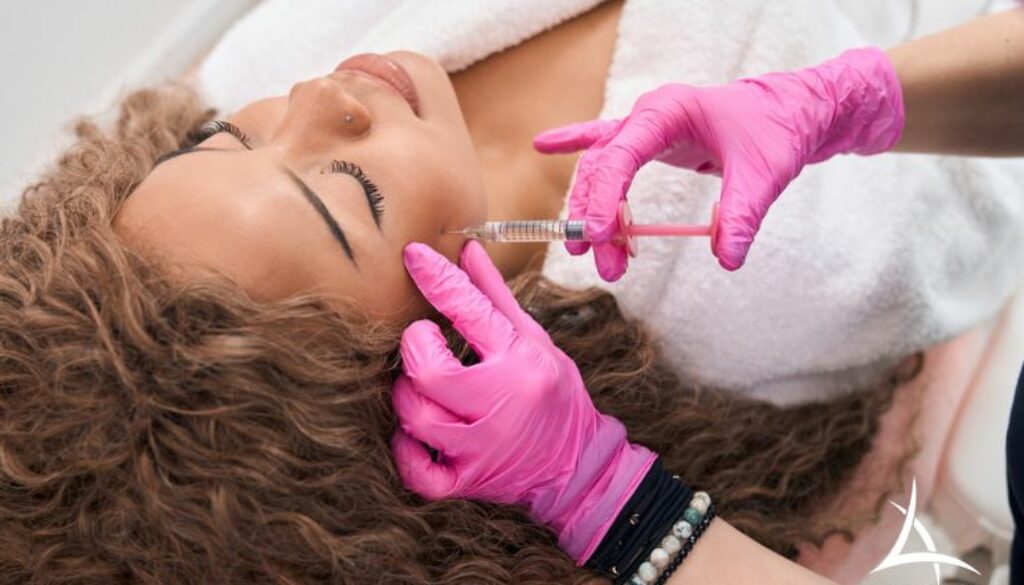The Science Behind Cosmetic Procedures: How They Work
Cosmetic procedures have become increasingly popular in recent years, with individuals seeking various treatments to enhance their appearance and boost their self-confidence. From nonsurgical options like injectables to more invasive surgical procedures, these treatments continue to revolutionize the beauty industry. But have you ever wondered about the science behind cosmetic procedures and how they actually work?
In this article, we will delve into the fascinating world of cosmetic procedures and explore the underlying science that makes them possible. We will discuss the different types of cosmetic procedures, the role of science in their development, the process of performing these procedures, and the technologies and innovations driving this field forward. Furthermore, we will address the safety and efficacy of cosmetic procedures, their psychological impact, ethical considerations, and alternative approaches to beauty.

Understanding the Basics of Cosmetic Procedures
Before we dive into the science behind cosmetic procedures, it’s essential to understand their purpose and the different types available. Cosmetic procedures are performed with the primary goal of enhancing one’s physical appearance, often focusing on specific areas of the body such as the face, breasts, or abdomen. These procedures can be broadly categorized into surgical and nonsurgical options.
The Purpose of Cosmetic Procedures
Cosmetic procedures serve various purposes, ranging from correcting congenital malformations and injuries to improving aesthetic features and reducing signs of aging. Some individuals undergo these procedures to address specific concerns such as wrinkles, sagging skin, or excess fat deposits, while others opt for cosmetic enhancements to achieve a more symmetrical or balanced appearance.
Different Types of Cosmetic Procedures
The field of cosmetic procedures offers a wide range of options to address different aesthetic concerns. Surgical procedures include facelifts, breast augmentations, liposuctions, and rhinoplasties, among others. Nonsurgical procedures, on the other hand, involve techniques like injectables (such as dermal fillers and Botox), chemical peels, and laser therapies. Each type of procedure targets specific issues and requires different techniques and expertise.
The Role of Science in Cosmetic Procedures
It’s no secret that science plays a crucial role in the development and advancement of cosmetic procedures. From formulating specialized chemicals and compounds to understanding the intricate mechanisms of the human body, scientific knowledge forms the foundation of these treatments.
The Use of Chemicals and Compounds
Cosmetic procedures often rely on the use of various chemicals and compounds to achieve desired results. For example, dermal fillers utilize substances like hyaluronic acid or collagen to add volume and plumpness to specific areas of the face. Botulinum toxin injections, commonly referred to as Botox, relax muscles and reduce the appearance of wrinkles. Each chemical compound used in these procedures is carefully selected and tested for safety and effectiveness.
Understanding the Skin and Its Functions
The science behind cosmetic procedures also involves a deep understanding of the skin and its functions. The skin is the largest organ in the human body and plays a vital role in protecting internal structures, regulating body temperature, and providing sensory feedback. Cosmetic procedures that target the skin consider factors such as its composition, elasticity, and ability to regenerate. By understanding these characteristics, experts can devise techniques that optimize the results of cosmetic interventions.
The Process of Cosmetic Procedures
Achieving successful outcomes in cosmetic procedures requires a well-structured process involving various stages. A comprehensive understanding of each step ensures the safety and efficacy of the procedures.
Consultation and Assessment
The journey begins with a consultation, a pivotal step in the cosmetic procedure process. During this phase, individuals meet with a qualified cosmetic surgeon or practitioner to discuss their goals, concerns, and expectations. The practitioner assesses the patient’s medical history, examines the targeted areas, and provides professional advice on suitable procedures.
Open communication is key during this stage, allowing patients to express their desires and practitioners to set realistic expectations. A thorough assessment ensures that the chosen procedure aligns with the individual’s unique anatomy and aesthetic preferences.

Preparing for the Procedure
Once the decision is made to move forward, the preparation phase begins. This involves a detailed discussion of the procedure, including potential risks and benefits. Patients receive pre-operative instructions, which may include lifestyle adjustments, medication guidelines, and dietary restrictions.
In some cases, patients may need to undergo pre-operative medical tests to ensure they are in optimal health for the procedure. Clear communication between the patient and the medical team during this phase helps alleviate any concerns and ensures a smooth transition into the operating room.
Performing the Procedure
The actual cosmetic procedure marks a transformative moment in the process. Depending on the complexity and type of enhancement, procedures can range from minimally invasive treatments to more extensive surgeries.
Throughout the procedure, the medical team maintains a focus on patient safety and comfort. Advances in technology and surgical techniques contribute to more precise and efficient procedures, minimizing downtime and optimizing results. The expertise of the practitioner plays a crucial role in achieving the desired outcome while prioritizing the patient’s well-being.
Aftercare and Recovery
Post-procedure, the aftercare phase begins, representing a critical aspect of the overall process. Patients are provided with detailed post-operative instructions to support optimal healing and recovery. This may include guidelines on physical activity, medication schedules, and follow-up appointments.
Swelling, bruising, and discomfort are common in the initial stages of recovery. The medical team monitors the patient’s progress, ensuring any concerns are addressed promptly. Follow-up appointments allow for a comprehensive evaluation of the results and provide an opportunity for patients to discuss their experiences and any further questions they may have.
Technologies and Innovations in Cosmetic Procedures
The field of cosmetic procedures has witnessed a remarkable evolution driven by advancements in technology. From non-invasive treatments to sophisticated surgical techniques, these innovations have reshaped the landscape of aesthetic enhancements, providing individuals with safer, more effective options to achieve their desired outcomes.
Laser Technology
Precision Redefined:
Laser technology has revolutionized cosmetic procedures by offering precision and versatility. Lasers are employed for various purposes, including hair removal, skin resurfacing, and tattoo removal. The controlled application of laser energy allows practitioners to target specific tissues, minimizing damage to surrounding areas and enhancing the overall safety and efficacy of treatments.
Skin Rejuvenation:
Fractional laser technology, in particular, has become a go-to for skin rejuvenation. It promotes collagen production and addresses concerns such as fine lines, wrinkles, and uneven skin tone. The ability to tailor laser treatments to individual skin types and conditions underscores the customizable nature of this innovative technology.
Injectable Fillers and Botox
Dynamic Facial Enhancement:
The advent of injectable fillers and Botox has transformed the landscape of facial aesthetics. Injectable fillers, composed of substances like hyaluronic acid, add volume and smooth out wrinkles, providing a non-surgical solution for facial rejuvenation. Botox, derived from botulinum toxin, temporarily relaxes facial muscles, reducing the appearance of fine lines and wrinkles caused by repetitive facial expressions.
Versatility and Immediate Results:
The versatility of injectables allows practitioners to address various concerns, from plumping lips to contouring cheeks. What sets these innovations apart is the ability to achieve noticeable results with minimal downtime. Patients often appreciate the convenience and immediate impact of injectable treatments, making them a popular choice in the world of cosmetic enhancements.

Advanced Surgical Techniques
Minimally Invasive Approaches:
Advanced surgical techniques have elevated the safety and precision of cosmetic surgeries. Minimally invasive procedures, such as endoscopic facelifts and liposuction, utilize smaller incisions, reducing scarring and accelerating recovery. The integration of technology, such as high-definition imaging and robotic assistance, enhances the surgeon’s ability to achieve optimal outcomes.
3D Imaging and Virtual Planning:
Innovations like 3D imaging and virtual planning have transformed the consultation and planning phase of surgical procedures. Patients can visualize potential outcomes, allowing for more informed decisions and realistic expectations. Surgeons, in turn, benefit from enhanced preoperative planning, contributing to a higher level of accuracy during the actual procedure.
The Safety and Efficacy of Cosmetic Procedures
Ensuring the safety and efficacy of cosmetic procedures is paramount in the rapidly advancing field of aesthetic enhancements. From regulatory oversight to understanding potential risks and evaluating long-term results, a comprehensive approach is crucial to maintaining the highest standards of patient care.
Regulation and Certification
Industry Standards:
The safety of cosmetic procedures begins with stringent regulation and certification standards. Regulatory bodies, such as the American Board of Cosmetic Surgery (ABCS) and the American Society of Plastic Surgeons (ASPS), set guidelines and criteria to ensure practitioners meet established standards of training and expertise. Certification acts as a marker of a practitioner’s commitment to adhering to ethical practices and delivering quality care.
Continuous Training and Education:
The dynamic nature of cosmetic procedures requires practitioners to engage in continuous education to stay abreast of emerging technologies and best practices. Participation in accredited training programs and ongoing professional development ensures that practitioners are equipped with the latest knowledge, contributing to the safety and efficacy of the procedures they perform.
Risks and Complications
Informed Consent:
Every cosmetic procedure involves a degree of risk, and ensuring patient understanding is essential. Practitioners must thoroughly explain potential risks and complications during the consultation phase. This process, known as informed consent, empowers patients to make well-informed decisions about their treatments.
Individualized Risk Assessment:
While complications are rare, they can occur. Factors such as a patient’s medical history, existing health conditions, and lifestyle habits play a role in determining individualized risk. Through comprehensive assessments, practitioners can identify and mitigate potential risks, contributing to a safer overall experience.
Long-Term Results
Setting Realistic Expectations:
Achieving long-term satisfaction with cosmetic procedures hinges on setting realistic expectations from the outset. Open communication between the practitioner and the patient is crucial in ensuring that the desired outcomes align with what can realistically be achieved. This transparency fosters a partnership between the patient and the practitioner, contributing to overall satisfaction.
Follow-Up and Maintenance:
Regular follow-up appointments are essential to monitor the long-term results of cosmetic procedures. Practitioners assess the healing process, address any concerns, and provide guidance on post-procedure care. In cases where maintenance is required, such as with injectable fillers or certain laser treatments, a well-defined plan ensures that the desired results are maintained over time.
Conclusion
In unraveling the science behind cosmetic procedures, we’ve ventured into a world where innovation meets aesthetic aspirations. From the intricacies of surgical techniques to the precision of laser technology, each advancement underscores a commitment to safety, efficacy, and patient satisfaction. As the cosmetic landscape evolves, the fusion of art and science continues to redefine beauty standards, offering individuals a transformative journey tailored to their unique aspirations.
Also Read:



